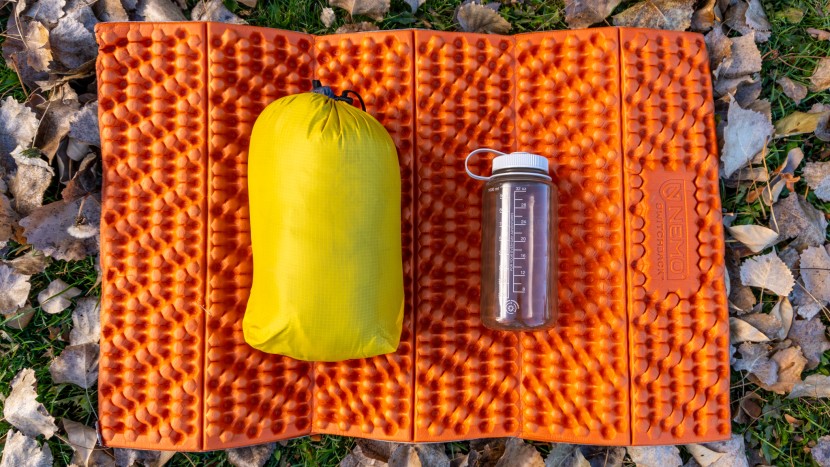For serious hikers and backpackers, every ounce counts. When you’re trekking miles through rugged terrain, the last thing you want is a bulky, heavy sleeping bag slowing you down. That’s where ultralight sleeping bags come in. They combine comfort, warmth, and compactness, allowing you to travel farther with less strain. In this detailed guide, we’ll explore the best ultralight sleeping bags, what to look for when choosing one, and the top picks available today for those who demand high performance from their gear.
Why Choose an Ultralight Sleeping Bag?
The main goal of an ultralight sleeping bag is to provide maximum warmth and comfort with minimum weight. Traditional sleeping bags often weigh between 3 to 5 pounds, but ultralight versions can come in under 2 pounds—or even less—without sacrificing essential insulation. For long-distance hikers or thru-hikers, this difference can dramatically improve endurance and reduce fatigue.
Beyond weight savings, ultralight bags also pack down much smaller, freeing up valuable space in your backpack for other essentials. They’re designed using advanced materials and efficient insulation technologies that trap heat effectively, making them ideal for minimalists who value performance and mobility.
Key Factors to Consider When Choosing the Best Ultralight Sleeping Bags
Before investing in a new sleeping bag, it’s important to understand what separates the best ultralight sleeping bags from average ones. Here are the most crucial factors to consider:
Weight and Packability
Weight is the defining feature of an ultralight sleeping bag. For most serious hikers, a sleeping bag that weighs under 2 pounds is ideal. Many of the best ultralight sleeping bags can be compressed into a stuff sack smaller than a water bottle, allowing for efficient packing. Down insulation generally provides the best warmth-to-weight ratio, though high-end synthetic options are also improving rapidly.
Temperature Rating
Always check the temperature rating to ensure the bag meets your needs. The most accurate ratings are EN or ISO certified, which test the bag’s performance under standardized conditions. Keep in mind that ultralight bags tend to prioritize low weight, so they may have less insulation than heavier models. If you hike in colder regions, look for a 20°F or 30°F rating, while summer hikers can opt for 40°F or higher.
Insulation Type
There are two main types of insulation—down and synthetic.
- Down insulation is the gold standard for ultralight performance. It offers exceptional warmth-to-weight efficiency and compressibility. However, it can lose insulating power when wet unless treated with a water-resistant coating.
- Synthetic insulation is bulkier but continues to insulate when damp and dries faster. It’s often more affordable, making it appealing for hikers on a budget or those in humid climates.
Shape and Fit
Sleeping bag shapes affect comfort and heat retention. Mummy-shaped bags are the most efficient, as their snug design minimizes air space and retains heat better. Quilt-style bags, on the other hand, are increasingly popular among ultralight enthusiasts because they eliminate the underside insulation (which compresses under body weight) and can double as blankets.
Fabric and Durability
The best ultralight sleeping bags use high-quality, durable nylon or polyester shells, often with a DWR (Durable Water Repellent) finish. Ripstop weaves prevent tears while keeping the fabric lightweight. Look for fabrics rated between 10D to 20D, which balance strength and softness without adding unnecessary bulk.
Top Picks: The Best Ultralight Sleeping Bags for Serious Hikers
After considering performance, weight, warmth, and comfort, here are some of the best ultralight sleeping bags available for 2025 that meet the demands of dedicated backpackers.
1. Western Mountaineering UltraLite
The Western Mountaineering UltraLite is often regarded as one of the finest ultralight sleeping bags on the market. Weighing just around 1 pound 13 ounces, it features 850+ fill power goose down and a temperature rating of 20°F. Its premium construction and precise craftsmanship make it ideal for cold-weather backpacking. Though it’s pricey, it delivers unbeatable warmth-to-weight performance and longevity.
2. Therm-a-Rest Hyperion 20
At just 1 pound 4 ounces, the Therm-a-Rest Hyperion 20 stands out for its innovative design and premium materials. It uses 900-fill hydrophobic down that resists moisture and maintains loft in damp environments. The zoned insulation—more fill on top, less underneath—reduces unnecessary weight. Its compact size makes it one of the most efficient options for ultralight hikers.
3. Feathered Friends Tanager 20 CFL
The Feathered Friends Tanager 20 CFL is designed for pure minimalists. This sleeping bag has no zipper, saving extra grams, and it weighs an incredible 1 pound 2 ounces. With high-loft 950+ fill power down, it provides surprising warmth for such a lightweight design. It’s best suited for experienced hikers who understand how to manage temperature in varying conditions.
4. Enlightened Equipment Revelation Quilt
For hikers who prefer flexibility, the Enlightened Equipment Revelation Quilt offers an ultralight and versatile alternative to traditional mummy bags. It weighs as little as 14 ounces and can be opened up completely like a blanket or cinched down for cold nights. The customizable fill power and temperature rating options make it one of the most adaptable ultralight sleep systems available.
5. Sea to Summit Spark SP I
The Sea to Summit Spark SP I is an excellent choice for summer hiking or fast-paced adventures. Weighing just 12 ounces, this sleeping bag uses 850+ fill Ultra-Dry Down and a 10D shell fabric. It packs down incredibly small, making it ideal for warm climates or as part of a lightweight sleep system combined with a bivy sack or liner.
Care and Maintenance Tips for Ultralight Sleeping Bags
An ultralight sleeping bag is an investment, so proper care is essential to ensure its longevity and performance. Here are a few tips:
- Use a sleeping bag liner: It helps keep the interior clean and reduces the need for frequent washing.
- Store it uncompressed: When not in use, store your sleeping bag in a large mesh or cotton sack to maintain loft.
- Clean gently: Wash using a down- or synthetic-specific detergent and follow the manufacturer’s instructions carefully.
- Dry thoroughly: Air dry or tumble dry on low with dryer balls to restore the fluffiness of the insulation.
- Avoid moisture: Always use a waterproof stuff sack or dry bag to protect your sleeping bag from rain and condensation.
How to Choose the Right Sleeping Bag for Your Hiking Style
Different hikers have different needs, and the best ultralight sleeping bags vary depending on the conditions you face. For alpine adventures or cold-weather treks, go with a bag rated for 20°F or below with high fill power down. For summer backpacking, a lightweight quilt or 40°F-rated bag will save you even more weight and space.
If you prioritize versatility, a quilt system or hybrid bag can adapt to multiple environments. For extreme minimalists, zipperless designs or half-length sleeping bags can push weight savings even further, but they require careful layering and planning.
Final Thoughts
Choosing the best ultralight sleeping bags is all about finding the perfect balance between weight, warmth, and comfort. Whether you’re thru-hiking the Appalachian Trail, exploring the Rockies, or embarking on weekend backpacking trips, investing in a quality ultralight sleeping bag will enhance your experience by reducing pack weight and increasing mobility.


